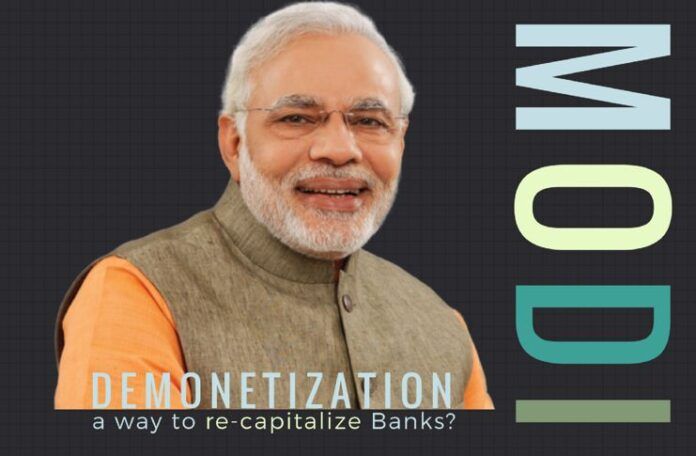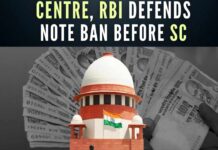
Summary
The currency crisis in India I predicted on Seeking Alpha on August 17, 2015, is here. India is the first domino to fall.
The demonetization step of the government is a bank holiday in a guise.
The ensuing developments in the second largest consumer of gold might significantly boost the price of the precious metal.
In 2015, Seeking Alpha published my two articles Will India Be The First Domino To Fall? and You Can’t Just Invest On Hope in which I predicted a currency crisis in India. On November 08, 2016, Prime Minister Narendra Modi announced the demonetization of 500 ($7.5) and 1,000 ($15) rupee notes, which constitute more than 85% of the currency in circulation. These notes ceased to exist as legal tenders on the night of the announcement. People can deposit them in their bank accounts before December 30, but cannot withdraw more than $350 in a week.
The purported object behind this step is to get rid of high denomination currency notes that the government believes are hoarded by tax evaders and corrupt government bureaucrats. This might be a little difficult to digest for an economist. For one, the corrupt might not be smart but they are not naïve to simply sit on piles of cash that don’t yield any return; it doesn’t take a rocket scientist to diversify. Secondly, there is a simpler explanation that an economist might relate to better, and which is backed by data (read my two articles); the government run banks in India have run out of money and this is a bank holiday.
Here is an excerpt from my first article published on August 17, 2015.
The crisis has begun and there are only two ways forward for the banks; they can either take money printing to yet another level or announce a bank holiday and force the depositors to take a haircut on their deposits. The former route, although more harmful for the economy in the long run, is more likely to be the choice of the government as it will prefer to maintain the pretense of payment (via money printing) and not have social unrest in the short run.
What I did not anticipate back in 2015 was that the government will choose the latter route. What is happening in India is worse than a bank holiday. In a bank holiday, one at least gets to keep the cash he has. Under demonetization, people in India have been forced to deposit the cash they won’t be able to withdraw. The government has not clearly communicated when it will lift the cash withdrawal restriction and is encouraging people to use mobile banking instead.
Since my articles were published last year, assets under default in Indian banks have increased by about 100% to more than $98 billion dollars. This does not include loans that were recently restructured to make the bank balance sheets look good. It also does not include money lent to the government which it cannot pay back with legitimate means i.e. taxation; neither the socialist mindset of the government nor the worsening fiscal situation is promising.
One might wonder why the government needs all the cash when Prime Minister Modi promised minimum-government maximum-governance. The NDA government is no less socialist than the preceding UPA government. It needs the cash to fund centrally planned schemes such as MUDRA where the same government run banks, that are on the brink of collapse, are lending to sectors determined as high priority by bureaucrats sitting in Delhi. The seventh pay commission by the Ministry of Finance further increased the salaries of millions of government officials earlier this year.
Abolishing the planning commission, one of the first steps taken by the government that came to power in 2014, is proving to be merely symbolic. The government is unable to look beyond central planning and government control. Every scheme launched in the last two and half years, including Skill India, Clean India, Start Up India, Make In India, Jan Dhan Yojna, buying millions of LED bulbs, distributing LPG cylinders to the poor, has central planning written all over.
Banks run by the government control more than 75% of the market in India. These banks don’t have money to fund these populist schemes of the government and this is the reason they are confiscating cash from people, and in the process draining private investment, and further weakening the fundamentals of the economy.
Let us look at the latest numbers published by the Ministry of Finance on October 13, 2016. The gap between revenue and expenditures of center and state governments has continued to widen from $135 billion in 2015 to $140 billion in 2016.

Interest payments, the biggest line item in expenditures, have increased by 11% from $88 billion in 2015 to $98 billion in 2016. None of the major expenditures including Pension and Retirement Benefits, Social Security and Welfare, Food Subsidy and Fertilizer Subsidy have gone down under the new government.

The government’s reliance on indirect taxes has increased. When oil prices declined from $100 in 2014 to $30 in 2016, retail price of oil in India did not drop. The government simply started collecting more tax. That cushion is getting thinner now with the OPEC reaching a deal to cut production.

This stage is set for another fiscal crisis for the government. This crisis will approach much faster now that the private investments have taken another severe hit. This time, the government will be forced to use money printing to deal with it, as not making good on its promises might not be politically feasible at the time.
To understand in detail and in layman’s terms how the toxic mix of socialist governments and nationalized banks in India has ruined the Indian economy in recent years, I would encourage you to read the following two articles Republic of Ghaziabad – Part I and Republic of Ghaziabad – Part II. I have written these articles for people who do not understand complex terminologies of economics.
Two Booster Rockets For Gold
India is the second largest consumer of gold. The majority of the precious metal transactions in India is bought with cash and demonetization has left the consumers cash-strapped. When people eventually get hold of their money in cash, they are more likely to buy gold, which cannot be made worthless overnight by the government with an announcement.
The second rocket is made in the US. The probability of a rate hike by the Federal Reserve in December currently stands at more than 90%. This has strengthened the dollar and further suppressed the price of gold. The fiscal situation of the US government is not hidden from anybody, and Donald Trump has already announced his plans of spending, bigly. China is continuing to dump the US treasuries, and Japan, the second-largest foreign creditor, reduced its holding by 0.7% to $1.14 trillion in September alone. With tax cuts Donald Trump has promised, only a huge QE4 can finance the new government’s spending plans.
I believe that both these booster rockets might take the price of gold to a record high within one year. You may consider buying physical gold or mining stocks such as Goldcorp (NYSE:GG), Randgold (NASDAQ:GOLD) and Newmont Mining Corp (NYSE:NEM).
- Solution to Kashmir: A Lesson From The Prairies, the Pampas and the Kashyaps - February 12, 2019
- Kartavya,Adhikaar And Skill. A Worthy recipient of Skill India Scheme? - October 16, 2017
- Demonetization Has Opened A Window Of Opportunity For Modi - December 21, 2016











This is good analysis but for the assumption that currency swap will latter be a bail-in to beef up banks falling capital ratios. [“bank holiday and force the depositors to take a haircut on their deposits.”]. Making such an assumption when even the legal foundation are not put in place is also puzzling. I find this assumption too strong because it has not been subjected to the test of political cost. PMs personal capital is at stake and if after that Govt decides to take a haircut on deposits it is a sure political disaster, a betrayal. Second calling MUDRA a centrally planned scheme, author has absolutely no understanding of what this scheme is after all. This article uses a theory of economics that that does not apply to Indian at all.
I disagree. Pathak is right on this
“[“bank holiday and force the depositors to take a haircut on their deposits.”]
Cyprus was a test case . All G20 countries and more have changed the laws for a bail in.
The ECB has insisted that all members also do the same.
Apparently you have no idea also of the banking dominoes that will have to fall and the impending and inevitable financial collapse.
No India is not insulated. And beyond Rs 1 lakh in your bank account you will lose all your money. Mentioned the details in an earlier posting here on PGurus.
Looks like you keenly follow the Zero Hedge Website. Yes he is right in describing European experience. But how will Govt do it if there is now law to change the nature of liability. You have narrated experiences which are true in Europe. ECB does not dictate policy in India. Moreover economist have no understating of foreign policy, they do not follow the economic signal in foreign policy. Give me one RBI directive on bail-in I will cross ur side. Sorry to say but what ur mind is troubled by the follies of partial equilibrium analysis.
There is no difference between lending to a bank or to an other corporate institution. You are just an unsecured creditor in their books.
You are only secured to the extent of your insurance ( 1 L with RBI) . On Bail in- India has to /had to fall in line after 16th Nov 2014. For your reference:
https://www.nestmann.com/its-official-the-worldwide-bail-ins-are-coming
https://en.wikipedia.org/wiki/G20
There are many backdoor methods that Gov use. Trust the Indian Gov! Not me
I dont look for converts . I only look for the truth
There is no logic in his claims
Here is a link to Dr. Swamy’s article published on September 18, 2015 where he predicted an economic tailspin: http://www.thehindu.com/opinion/lead/the-way-out-of-the-economic-tailspin/article7662610.ece